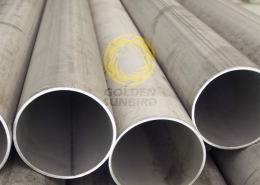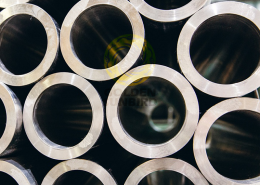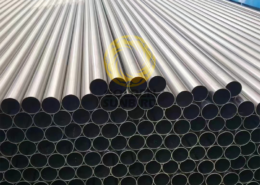ASTM B655 Niobium-Hafnium Alloy Bar and Wire
- Type: Bar and Wire
- Niobium-Hafnium Alloy
- UNS R04295, 89Nb-10Hf-Ti, C-103
Features
ASTM B655 Niobium-Hafnium Alloy Bar and Wire
UNS R04295/89Nb-10Hf-Ti/C103 grade Niobium-Hafnium alloy Bar, Rod and Wire Chemical Composition (wt.%)
| Chemical Requirements for Ingot Niobium-Hafnium Alloy R04295 Element Content, Maximum Weight % (Except Where Otherwise Specified) |
||||||||||
| UNS No. | C, max | O, max | N, max | H, max | Hf, max | Ti, max | Zr, max | W, max | Ta, max | Nb, max |
| UNS R04295 | 0.015 | 0.025 | 0.010 | 0.0015 | 9-11 | 0.7-1.3 | 0.7 | 0.5 | 0.5 | Balance |
UNS R04295/89Nb-10Hf-Ti/C103 grade Niobium-Hafnium alloy Bar, Rod and Wire Mechanical Properties
| Additional Chemical Requirements for Finished Product of Niobium-Hafnium Alloy R04295 Element Content, Maximum Weight % |
||||
| UNS No. | C, max | O, max | N, max | H, max |
| UNS R04295 | 0.035 | 0.015 | 0.010 | 0.0015 |
| Mechanical Properties for Material, Annealed Condition (90 % Minimum Recrystallized) |
|||
| Conditions | Tensile Strength (Mpa) |
Yield Strength (Mpa) |
Elongation % |
| Material 0.05 in. [1.3 mm] and thinner: Room temperature 2000 6 25°F [1100 6 15°C] |
385 | 275 | 20 |
| 145 | 110 | 20 | |
| Material greater than 0.05 in. [1.3 mm] in thickness: Room temperature 2000 6 25°F [1100 6 15°C] |
370 | 260 | 20 |
| 145 | 110 | 20 | |
Technical Specifications
| Specification | Value |
| Standard | ASTM B655 Niobium-Hafnium Alloy Bar and Wire |
| Grade | UNS R04295/C-103/89Nb-10Hf-Ti |
| Condition & Finish | Annealed, cold worked, and stress-relieved; clean, bright finish, free of defects and surface imperfections. |
| Type | Bar, Rod, Wire |
| Dimension | Square / Rectangular bar size: Thickness: 5 – 50mm x Width: 50 – 150mm |
| Round / Hexagonal / Octagonal rod size: Dia. 3.2 – 64mm | |
| Coiled, Spooled or Reeled wire size: Dia. 0.5 – 3.2mm | |
| Inspection Certificate | EN 10204 Type 3.1 (Mill Test Certificate), EN 10204 Type 3.2 (Witness Testing or 3rd Party Inspection) |
| Test | Chemical analysis, Tensile test, Hardness test, Microstructural examination |
Packing
Packed in plywood boxes or on plywood pallets.
Applications
High-Temperature Applications:
Jet Engine Components: Turbine blades, discs, and other parts exposed to high temperatures and stresses.
Rocket Engine Parts: Nozzles, combustion chambers, and other components requiring high-temperature resistance.
High-Temperature Furnace Components: Parts within furnaces operating at extremely high temperatures.
Nuclear Reactors (Depending on Grade):
Control Rods: Absorbing neutrons to control the rate of nuclear fission within the reactor core (relevant for specific grades).
Shielding Materials: Protect personnel and equipment from radiation (relevant for specific high-grade grades with high Hafnium content).
Other Applications:
Getter Pumps in Vacuum Systems: Niobium-Hafnium alloys can absorb gases, making them helpful in maintaining a vacuum environment.
Biomedical Implants (Depending on Grade): Some Niobium-Hafnium grades exhibit good biocompatibility and are potentially suitable for certain implants. However, rigorous testing and regulatory approval are crucial for such applications.
Defense Applications: These alloys’ high strength and corrosion resistance might be valuable for specific defense-related components.








